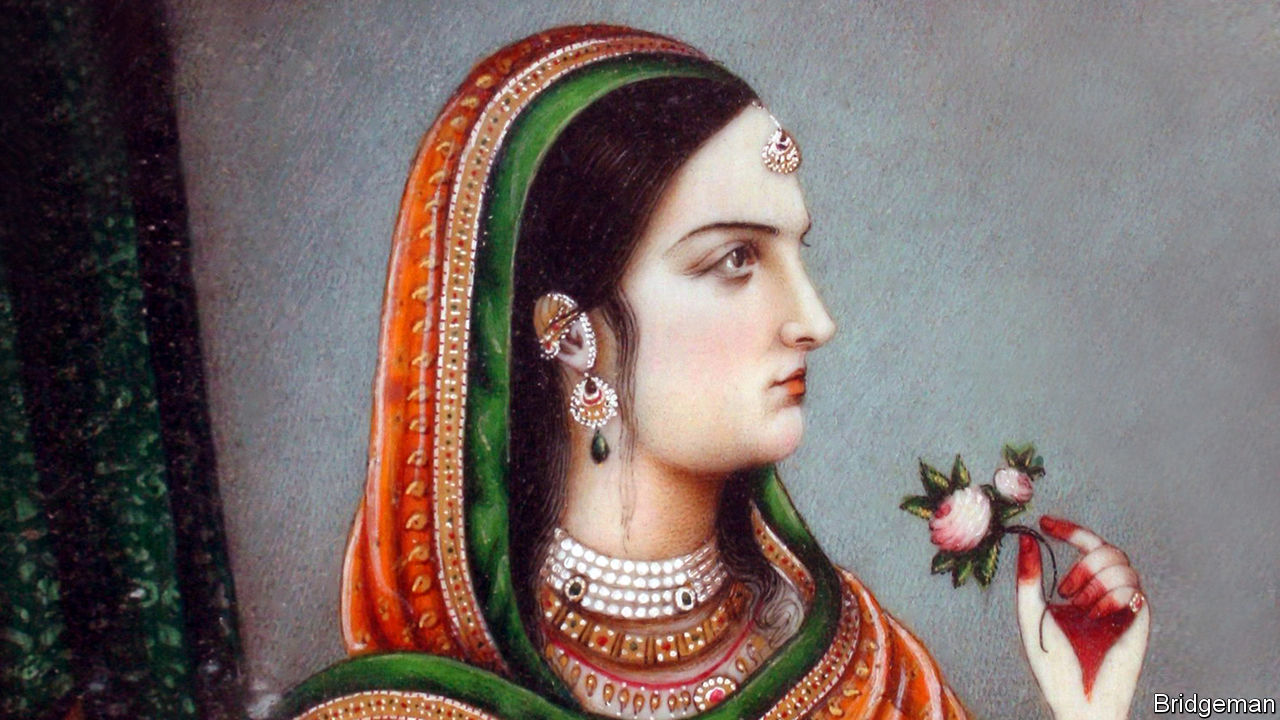Source: Economist
Not just a pretty face
The brilliant career of Nur Jahan, empress of India
Chauvinism has reduced her to caricature. Ruby Lal’s biography brings her back to life

Empress: The Astonishing Reign of Nur Jahan. By Ruby Lal. W.W. Norton & Company; 336 pages; $27.95 and £19.99.
THAT India’s Mughal emperors could be devoted to their queens is no surprise. The Taj Mahal, their most famous monument, was a homage to the memory of Mumtaz Mahal, the emperor Shah Jahan’s most-mourned wife. Less well-known is that Mumtaz’s aunt (and Shah Jahan’s stepmother), Nur Jahan, was, for 16 years from 1611, in effect India’s co-ruler.
In fact, according to Ruby Lal’s biography, she became “prime minister as well as empress”. Uniquely for a Mughal woman, her name featured on coins. Not until Indira Gandhi became prime minister in 1966 would India again be ruled by a woman. (Queen Victoria was rather hands-off.)
Not that Nur Jahan has been forgotten. Hers is a household name in South Asia, and her story has been told in at least eight films, several plays and many historical romances. But she is famous for having won the heart of her husband, the emperor Jahangir, with her beauty, and for using her charm to promote her own interests and her allies’. She came to be seen, in Ms Lal’s words, as “a gold-digger and schemer”, the “besotted” Jahangir as a “drunk, stoned and oversexed despot”.
This cartoonish version is not total fantasy. Nur was Jahangir’s 20th and last wife (by his own count; other estimates number his harem in the hundreds). He was indeed a heavy drinker—possibly never fully sober, by one report—and a user of opium. But Ms Lal’s meticulous book seeks to show that history has been unfair to Nur Jahan, a woman of many talents and remarkable force of character.
She designed gorgeous gardens and the tomb that became the model for the Taj Mahal itself. She was a great tiger huntress and brilliant shot (a classic portrait shows her tamping down the gunpowder in a musket). She was an accomplished soldier, planning the operation that rescued her husband from a kidnapping. And she was a skilled exponent of the ruthless power politics of the Mughal court, where it was a tradition for princes to rebel against emperor-fathers, and to take no prisoners.
Nur Jahan’s accomplishments have been belittled for two reasons. One is that history is written by its victors, and she lost a power struggle on Jahangir’s death—to Shah Jahan. To erase her from history, he may even have tried to withdraw the coins that bore her name. Certainly, his official chronicles overlooked her achievements and blamed her for the turmoil that marked the last years of Jahangir’s reign.
The second reason is that she was a woman, and as such, according to a guide to conduct popular among the Mughal aristocracy, “it were best…not to come into existence, but, being born, she had better be married or be buried.” When Jahangir’s great-aunt wanted to make the haj, his six-year-old brother was told to escort her: even a little boy was man enough to look after the empire’s most senior women.
The great-aunt seems to have bridled, and the boy was left behind. And Nur Jahan’s life shows women could soar beyond the harem. Still, both popular myth and serious historiography have conspired to diminish her to a demeaning stereotype, worsened in some Western accounts by Orientalist condescension.
In filling in the details of Nur Jahan’s life, Ms Lal has not only written a revisionist feminist biography; she has also provided a vivid picture of the Mughal court, with its luxuries, beauties, intrigues and horrors. Moreover, at a time when India’s Hindu-nationalist government chooses to emphasise one strain in the country’s history, she offers a reminder of the diversity of Indian tradition. Nur Jahan was a Shia Muslim, but “married a Sunni king who had a Hindu mother and both Hindu and Muslim wives and concubines.”
No comments:
Post a Comment